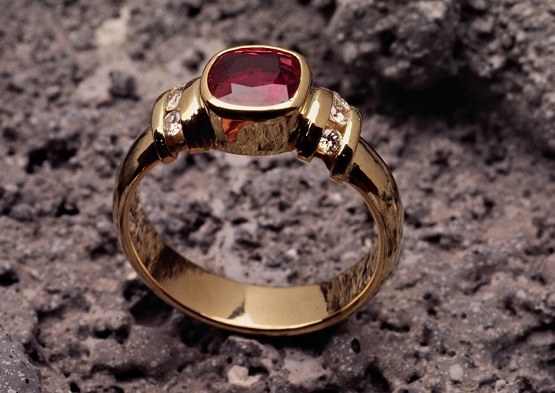The signs, which klassificeret stones
There are several classifications of precious stones, which are based on characteristics such as the hardness or scattering stone, mineral composition, crystallographic characteristics, prevalence in nature. That is why the separation of precious and semi-precious stones is very conditional.
For the first time the division into the types of gemstones offered by M. Bauer in 1896. Later to improve this issue addressed by many scientists, including A. E. Fersman and V. I. Sobolevskii.
It is customary to divide gemstones into three types: precious, semiprecious and ornamental.
Gems
Precious stones represent the minerals which are distinguished by their brilliance, beauty and play of color or strength and hardness and are used as decorations.
According to a simplified classification, precious gems of the first grade are: diamond, sapphire, chrysoberyl, ruby, emerald, alexandrite, spinel, spinel, euclase.
Second grade gemstones are: Topaz, beryl, aquamarine, red tourmaline, phenakite, demantoid, black amethyst, hyacinth, opal, almandine, zircon.
Diamond and diamond is one stone which is a kind of crystalline carbon. The first name refers to the stone in its natural form, and the second cut.
Terms such as semi-precious and ornamental stones, there is, as precious, they differ only in the wider spread and less obvious properties, which is reflected in the price of products with them.
Among semi-precious gemstones are: garnet, epidote, turquoise, dioptase, green and colorful tourmalines, Topaz, rock crystal, chalcedony, amethyst, sun and moonstone, Labrador.
To semi-precious (semi-precious) stones include: jade, Bloodstone, lapis lazuli, amazonite, Labrador lower quality varieties of feldspar and Jasper, smoky and rose quartz, vesuvian, jet, coral, amber, mother-of-pearl.
Modern classification of jewellery stones
Professional jewelers and mineralogists believe the best and most modern classification proposed by Professor E. Ya. Kievljanka.
The first group includes jewelry (other synonymous names – cutting, precious) stones:
- diamond, blue sapphire, emerald, ruby, constituting the first class;
- alexandrite, orange, yellow, purple and green sapphire, noble jade, noble black opal, which are included in the second class;
demantoid, noble spinel, aquamarine, Topaz, rhodolite, noble white fire opal, red tourmaline, moonstone (adular), which represent the third class;
blue, green, pink and multi tourmaline, turquoise, peridot, noble spodumene (kunzite, hiddenite), zircon, yellow, green, Golden and pink beryl, pyrope, almandine, amethyst, citrine, chrysolite, chrysoprase, the scientist who took the fourth grade.
The second group klassificeret stones, or stone-cutting stones:
- Topaz, amber-succinite, hematite, Bloodstone, jade, rock crystal, lapis lazuli, malachite, jade, aventurine, referring to the first class;
- agate, cacholong, colored chalcedony, amazonite, Bloodstone, rhodonite, rose quartz, iridescent obsidian, Labrador, common opal, moonstone etc. opaque iridescent porcelain that make up the second class.
The third group consists of decorative-facing stones including: Jasper, written granite, marble onyx, petrified wood, listwanite, jet, gespielt, obsidian, Selenite, quartzite, aventurine, fluorite, agalmatolite, colored marble, patterned flint.
